Wishing someone good luck is a fantastic way to show them you care about them and want them to succeed. Whether starting a new job, moving to a new city, or trying to bring good fortune into your home, flowers that mean good luck are a perfect way to share the sentiment.
In this article, we’ll cover 20 flowers that mean good luck for gifting or decorating your home.
Let’s dig in!
Azalea
Botanical name: Rhododendron spp.

Azaleas are a type of Rhododendron.
©PatGallery/Shutterstock.com
Azaleas are flowering shrub species of the Rhododendron genus. There are several species and many shades ranging from white to yellow to purple. These stunning bushes can grow up to 20 feet in ideal conditions, preferably in USDA zones 6-8.
Azaleas are considered good luck charms, attracting abundance and success when gifted to someone starting a new career. These flowers are toxic to pets, so be mindful when planting or gifting these beautiful blooms.
Bells of Ireland
Botanical name: Moluccella laevis
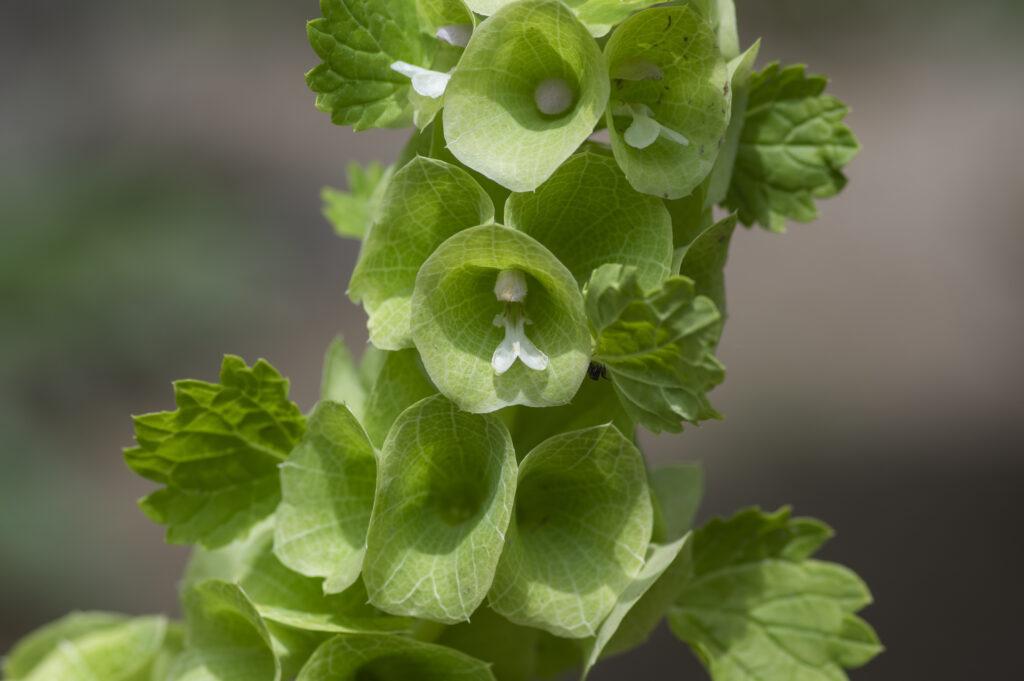
has tiny white blooms within its bell-shaped foliage.
©iStock.com/Iva Vagnerova
Bells of Ireland plants boast unique stalks filled with green bell-shaped foliage. At a glance, the foliage looks like green flowers. However, they surround a tiny white flower that’s almost invisible until it’s in full bloom. The stalks grow 2-3 feet tall and have a resilient nature. They can be planted in USDA zones 2-11.
This eye-catching annual is often used in European wedding arrangements and gifted on St. Patrick’s Day to wish luck upon the recipient. Despite the name and usage, this whimsical plant originates in Asia.
Cherry Blossoms
Botanical name: Prunus serrulata
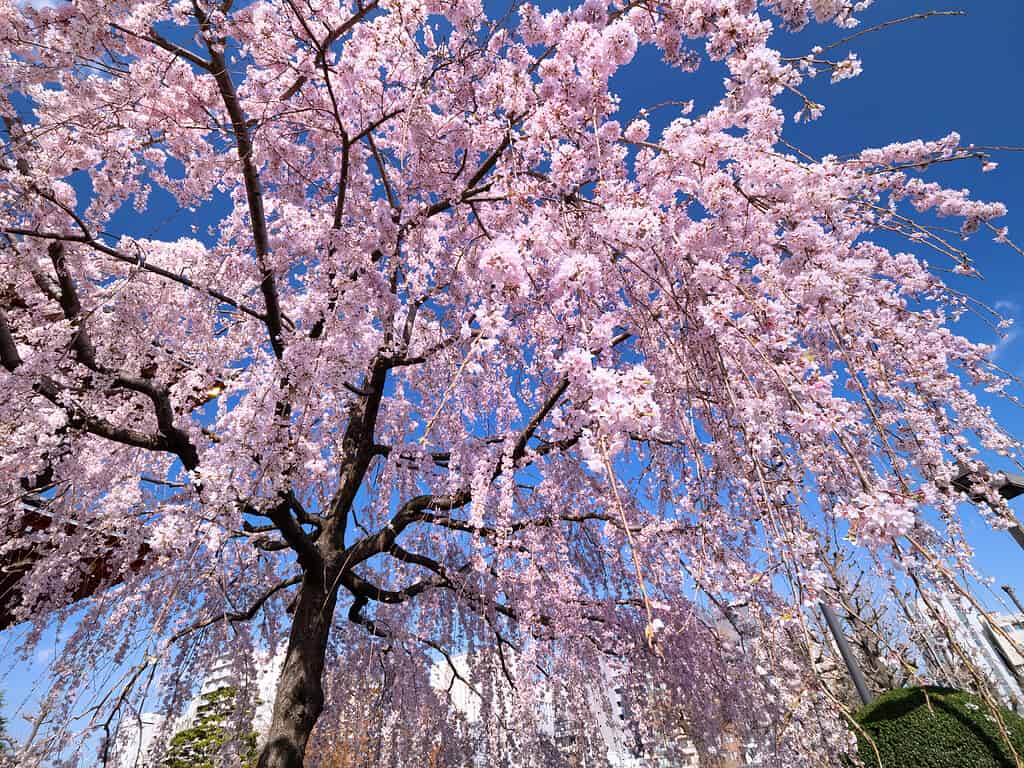
Cherry blossoms feature heavily in Japanese artwork and feng shui.
©y-studio/iStock via Getty Images
Cherry blossoms are among the most recognizable and well-known symbols of luck and prosperity. In Japan, the blooming season is a huge event, said to mean that luck has arrived. You can often find these beautiful yet fleeting blooms in artful displays throughout the home for feng shui.
Cherry blossoms will grow in USDA zones 4-8. If you live outside these zones, consider growing a flowering dogwood or similar tree instead. You can also give silk arrangements or art as a gift.
Chrysanthemum
Botanical name: Chrysanthemum spp.

Gold Chrysanthemums are a treasured gift in China.
©Dorothy Adaha Kayina/Shutterstock.com
While Chrysanthemums are associated with fall or Mother’s Day in North America, these well-known plants are considered lucky in China. Gold chrysanthemums, in particular, are especially lucky. These flowers were also placed by graves in Greece to ward off evil spirits.
These stunning flowers come in a range of colors and bloom types. Cold hardiness depends on the kind of Chrysanthemum, with an overall USDA zone range of 3-9. However, most species will only flourish in USDA zones 6-9. Cold hardy varieties are perennials, though these fall favorites are typically treated as annuals.
Cornflower
Botanical name: Centaurea cyanus
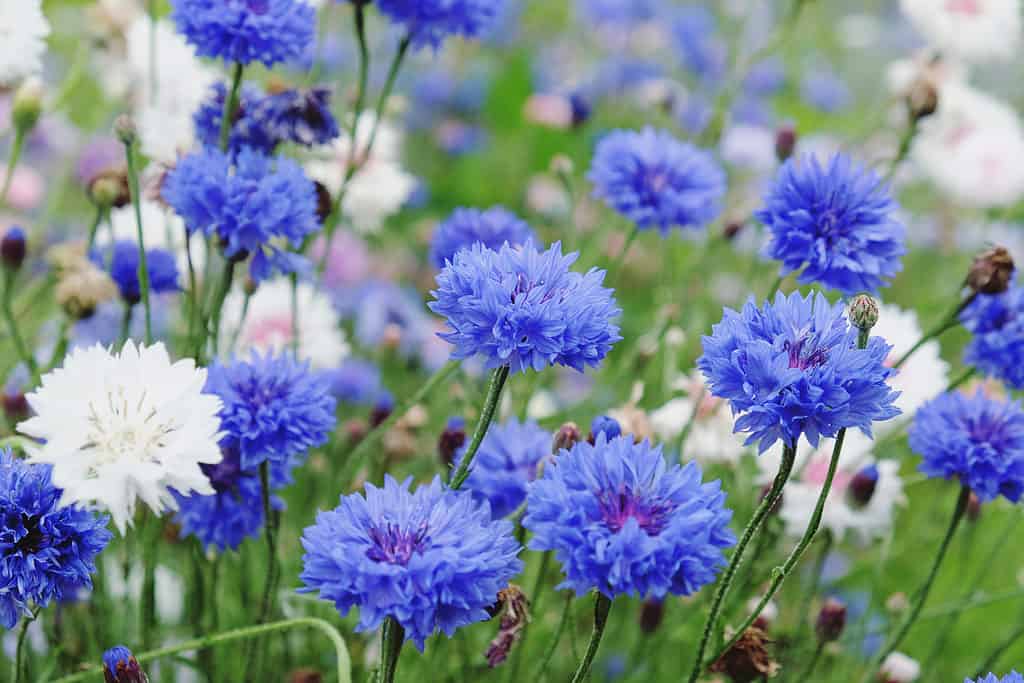
Cornflowers are also called Bachelor’s Buttons.
©Alex Manders/Shutterstock.com
The stunning blue Cornflower, also known as the Bachelor’s Button, has many meanings. It symbolizes hope for ALS charities, beauty, and fertility in mythology and is known to attract wealth and prosperity when worn or displayed. Indigenous groups frequently used cornflowers in traditional medicine and are still featured in good luck charms and jewelry.
Cornflowers are annual blooms that grow in USDA zones 2-11. While blue is the most notable and eye-catching color, white, pink, and purple are also common.
Gardenia
Botanical name: Gardenia jasminoides
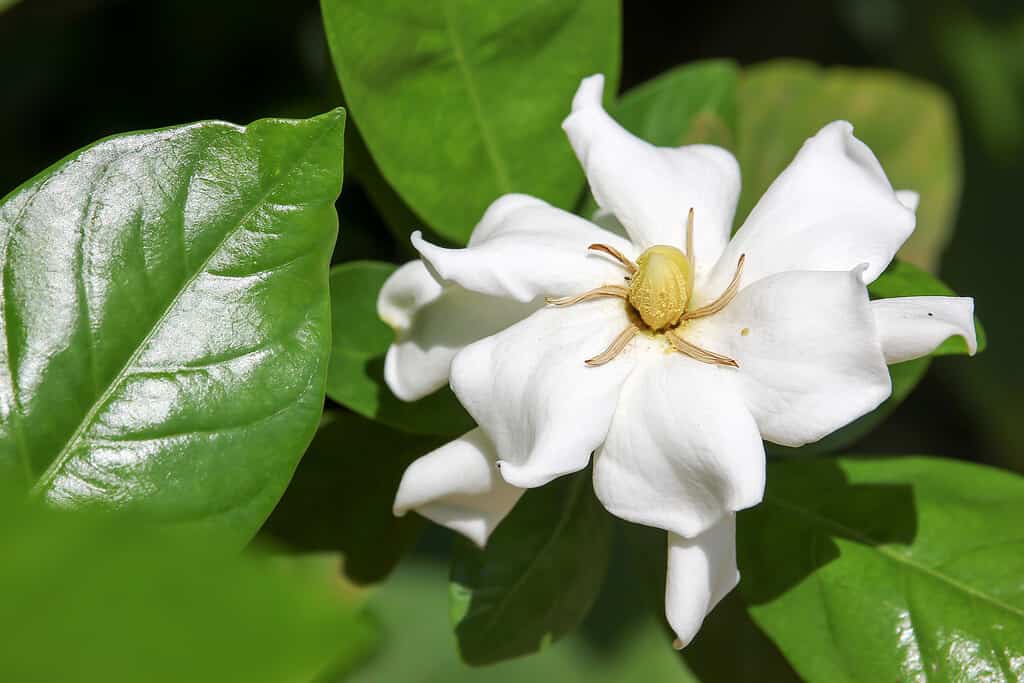
Gardenias are stunning blooms native to Asia.
©nuttapong/iStock via Getty Images
The Gardenia is an Asian flower that’s said to attract good fortune to one’s home. They’re often used in wedding bouquets for their stunning appearance and symbolize unity and joy, blessing the union. These evergreen shrubs are incredibly fragrant, making them a lovely addition to a yard or garden.
Gardenias will grow and flourish in USDA zones 8-11 and attract pollinators with their heady aroma. Unfortunately, these lovely flowers are toxic to pets, so plant and gift wisely.
Hydrangea
Botanical name: Hydrangea macrophylla

Purple hydrangeas are especially lucky, attracting wealth and prosperity.
©Oomka/Shutterstock.com
Hydrangeas are stunning in all shades, offering a unique coloration based on the soil pH where they’re planted. These gorgeous flowers mean good luck in all shades, but purple is especially lucky for attracting wealth and prosperity wherever planted.
Cold hardiness depends on the type of Hydrangea, with an overall USDA zone range of 3-9. However, most species will only flourish in USDA zones 5-9. Choose a cold hardy variety for USDA zones 3-4.
Jasmine
Botanical name: Jasminum spp.
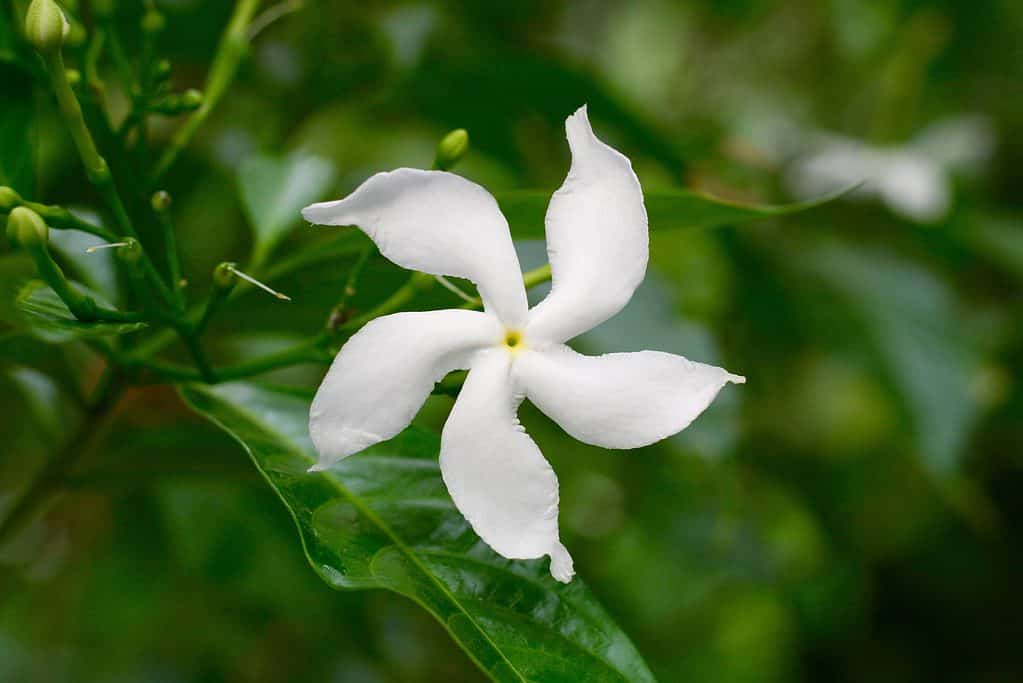
Star jasmine has a whimsical pinwheel shape.
©maerzkind/Shutterstock.com
Jasmine is another flower rich in symbolism and cultural significance, particularly in Asia. It has many meanings and is considered a symbol of hope and luck in many cultures. There are several species of Jasmine within the genus and many different colors, though white and yellow blossoms are the most popular.
Jasmine grows as a perennial flowering shrub in USDA zones 7-10. If you live in an area with extreme weather, provide ample shelter from the wind to help this stunning plant thrive.
Lotus
Botanical name: Nelumbo nucifera

Lotus flowers are known for being mud-free and resilient after terrible storms.
©iStock.com/Lquang2410
Perhaps one of the world’s most recognizable symbolic flowers, the Lotus is considered sacred in Asian cultures. It symbolizes rebirth, spiritual connections, strength, resilience in adversity, and luck. You can find lore about this beautiful flower dating back to Ancient Egyptian times and throughout Hinduism and Buddhism.
Lotus flowers are a type of water lily and require an aquatic plot for growth. You can plant these in a marine container display or a pond in USDA zones 4-10.
Magnolias
Botanical name: Magnolia spp.
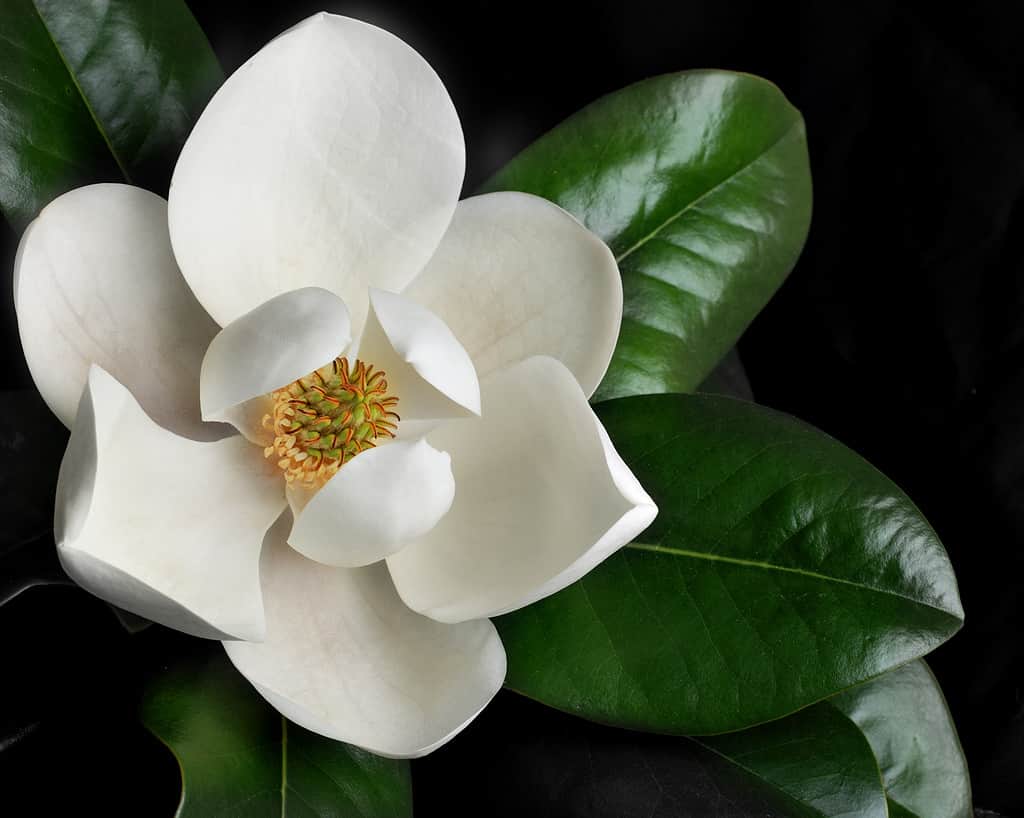
Magnolias predate modern pollinators and grew at the time of the dinosaurs.
©Jeremy Smith/iStock via Getty Images
While there are many types of Magnolia flowers, Magnolia grandiflora is perhaps the most recognized and coveted. These incredible flowers predate most evolutionary pollinators, like bees, and are primarily pollinated by beetles.
Purple and green magnolias are the most prevalent symbols of good luck, while white ones are more aligned with purity and innocence. Cold hardiness depends on the type of Magnolia, with an overall USDA zone range of 3-10. However, most species will only flourish in USDA zones 8 -9. Choose a cold hardy variety for USDA zones 3-7, like the star magnolia (Magnolia stellata).
Marigold
Botanical name: Tagetes spp.
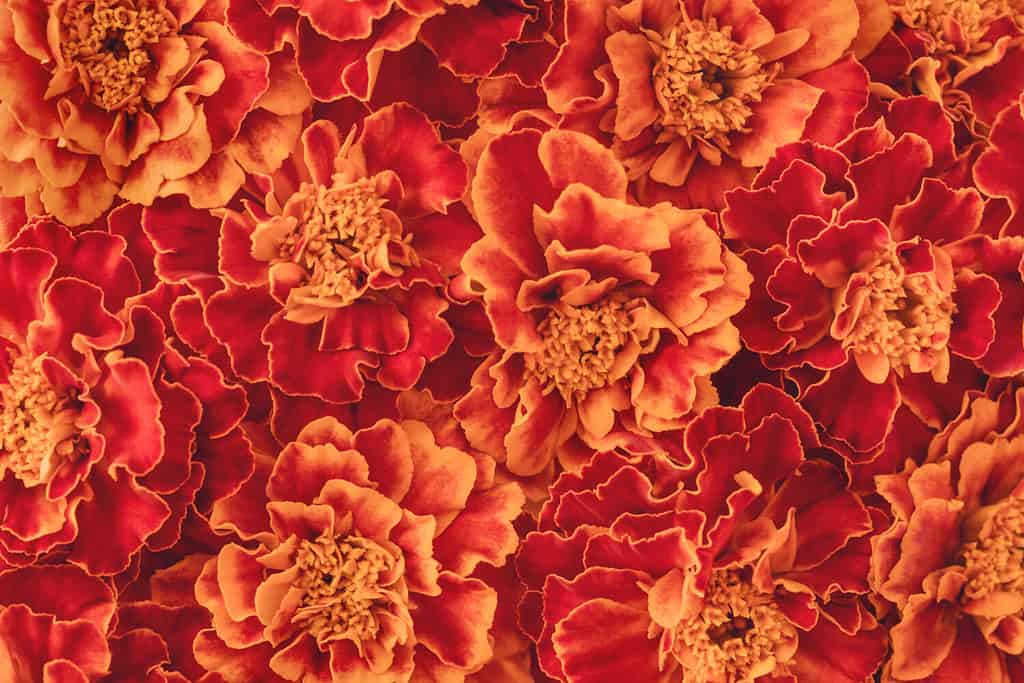
Plant marigolds around vegetable crops to keep pests away.
©ganjalex/Shutterstock.com
Marigolds are another sign of luck and good fortune and a popular gift in China for holidays and special events. Like the Chrysanthemum, the golden hues are considered especially auspicious and often gifted to elders.
Marigolds are also an exceptional companion plant for vegetable crops, as their intense aroma deters pests and deer — and what’s luckier than an abundant harvest? While Marigolds are annuals, they’re self-seeding and will produce new plants the following spring in warmer climates. Plant these anywhere in USDA zones 2-11.
Myrtle
Botanical name: Myrtus spp.
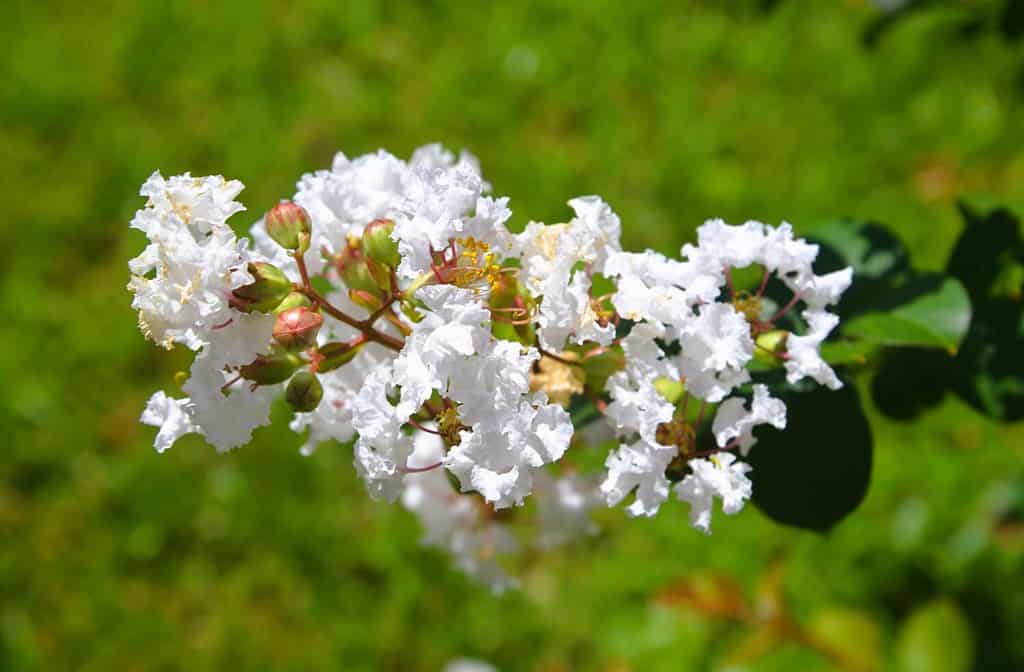
There are many types of myrtle, like crepe myrtle (pictured here).
©Shelia R. Wiseman/Shutterstock.com
Myrtle is a genus of unique flowers with fragrant blooms and foliage. It’s a popular symbol of good luck, especially when given as a gift and displayed in the home. You can also get myrtle bonsai trees for a stunning gift that lasts a lifetime.
Unfortunately, myrtle only grows in USDA zones 8-11 and isn’t cold-tolerant. You can grow myrtle indoors with lots of attention and care.
Orchid
Botanical name: Orchidaceae spp.

Orchids come in all shapes, sizes, and colors.
©Summer 1810/Shutterstock.com
Orchids are a family of plants comprised of over 28,000 recognized species. Unsurprisingly, they have several meanings, a rich history, and cultural significance. Orchids are a popular gift and are considered lucky when placed in the home.
Their placement also determines what kind of luck they bring. Putting an orchid in the bedroom brings luck in fertility, placing one in an office brings business success (especially when it’s a purple orchid), and placing it in a family room brings luck to the whole family.
Orchids are meant to be indoor plants when given as a gift and require little water, indirect sunlight, and deadheading to encourage continuous blooming.
Peonies
Botanical name: Paeonia spp.
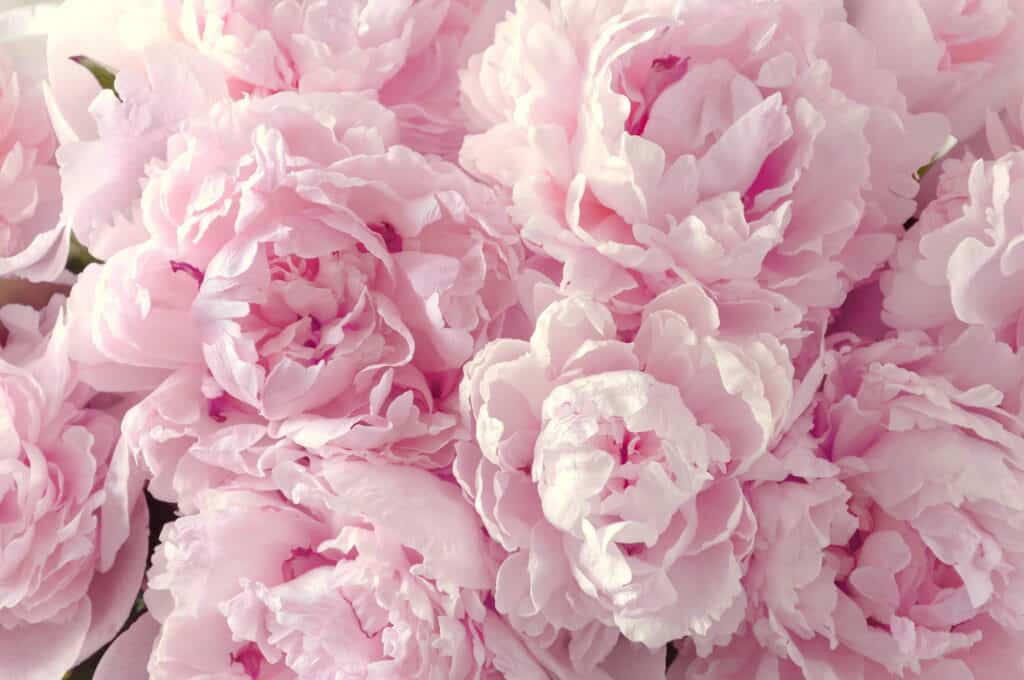
Peonies have full, lush petals.
©All for you friend/Shutterstock.com
Peonies are lush, gorgeous flowers in many shades and sizes. Their luxe petals and sweet aroma make them a popular addition to floral arrangements for special events. These blooms also represent luck, making them a popular option for weddings. In Asia, they also symbolize good fortune and abundance.
Peonies are perennials with cultivars thriving in USA zones 2-8. If you live in a cooler climate, pick peonies suitable for your region. Plant these bulbs in the fall so they vernalize and produce full flowers in the summer.
Plum Blossoms
Botanical name: Prunus mume
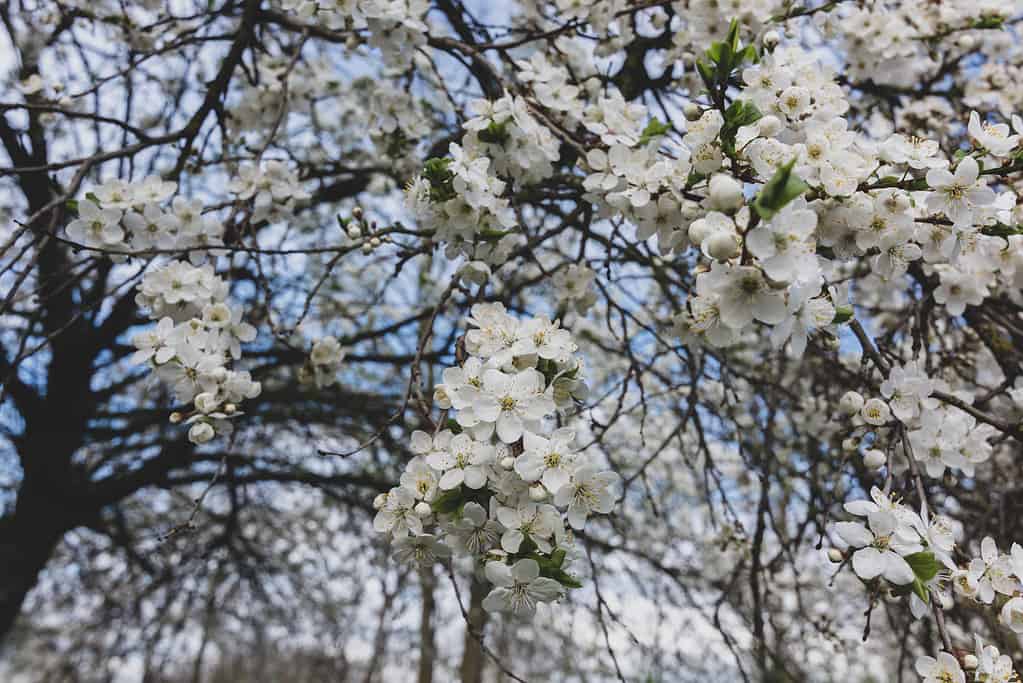
Plum blossoms are also symbols of good luck.
©Oleg Rebrik/iStock via Getty Images
While cherry blossoms get the glory and notoriety, plum blossoms are also an eye-catching representation of luck and good fortune. These winter blossoms are often here and gone before cherry blossoms grace the branches of their trees.
Like cherry trees, most plum trees aren’t known for being cold-hardy and typically only survive in USDA zones 6-8. If you live in a colder climate, look for a species like Prunus nigra (Canadian plum), which is hardy to USDA zone 2.
Poppy
Botanical name: Papaver spp.

Red poppies symbolize good fortune and luck in Asia.
©Yuriy Kulik/Shutterstock.com
Many North Americans associate red poppies with remembrance and In Flanders Fields. In Asia, these bold red blooms are associated with success and luck in romance, careers, and life. It’s important to remember these different associations when presenting poppies as a gift.
There are both cold-hardy perennial varieties and annual varieties. Poppies are notoriously difficult to transplant, making them difficult to start indoors before the frost. While these blooms can be finicky, they look stunning in gardens.
Runner Bean
Botanical name: Phaseolus coccineus
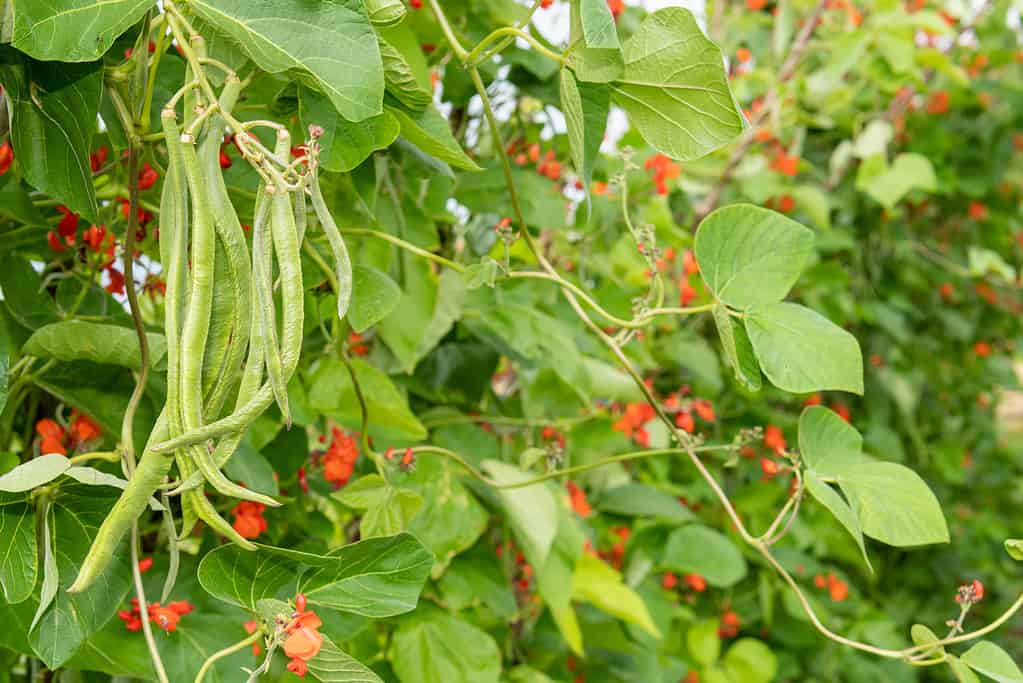
Runner beans have beautiful red blossoms associated with luck and good fortune.
©iStock.com/Tom Meaker
Like many red blossoms, runner bean blooms symbolize luck and good fortune in Asia and Central America. These legumes have a rich cultural history with traditional culinary and medicinal applications.
These heat-loving legumes perform best in USDA zones 7-11. Despite their traditional uses, runner beans are listed as toxic to humans and pets. Grow these for their lovely blooms, not for consumption.
Shamrocks
Botanical name: Oxalis spp.
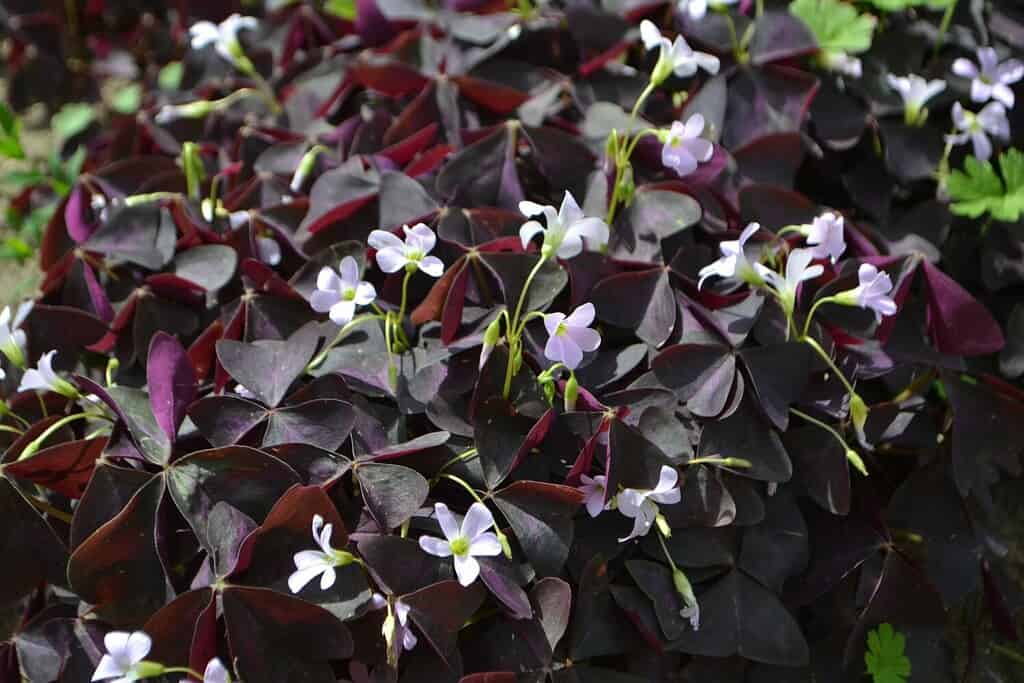
Several species of shamrocks produce flowers.
©Edita Medeina/Shutterstock.com
Shamrocks are one of the world’s most recognized symbols of good luck, but many are unaware that these lucky charms produce flowers. Oxalis articulata produces stunning pink blossoms, while Oxalis corniculata has cheerful yellow blooms.
You can grow shamrocks outdoors in USDA zones 8-11 or keep them as indoor plants year-round. Potted shamrocks are a lovely gift to wish someone well on their next adventure.
Snowdrops
Botanical name: Galanthus spp.
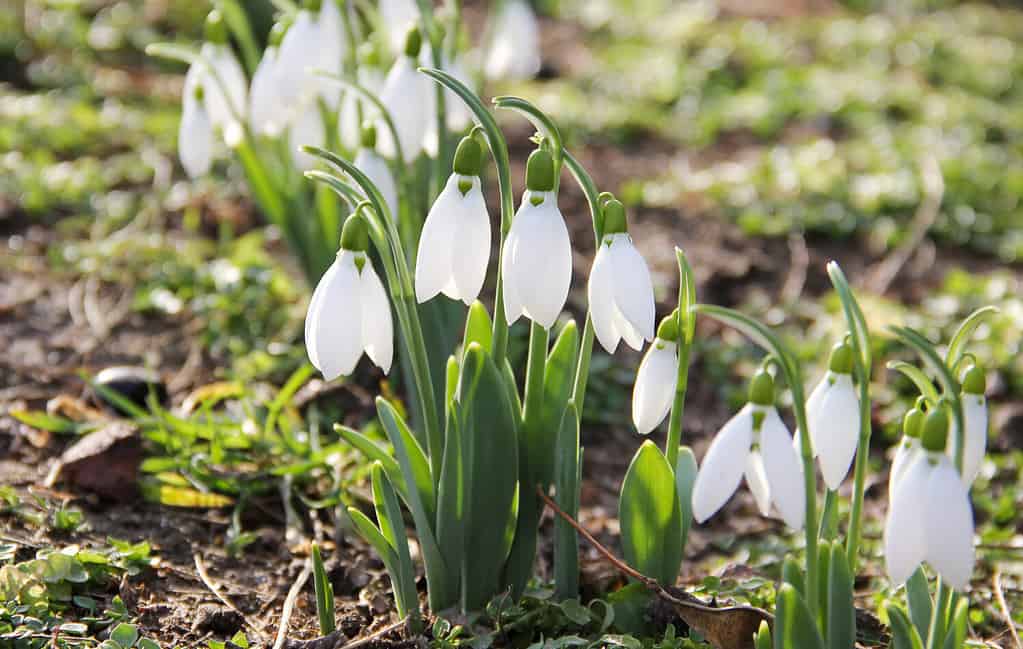
Snowdrops are considered a symbol of hope and luck, but only when left untouched.
©Olesya Myzzz/Shutterstock.com
Snowdrops are a genus of delicate white flowers that grow in treacherous mountain regions. These resilient blooms have a rich history and interesting lore in Europe. Their ability to push through snow and survive harsh conditions makes them a symbol of luck and hope. However, the lore also says if you bring them indoors, you’ll experience a death in the family within the year, and your perishables will spoil ahead of their time.
Stay on the lucky side by planting these rather than cutting and gifting them. These hardy blooms will grow in USDA zones 3-7.
Winterberry
Botanical name: llex verticillata
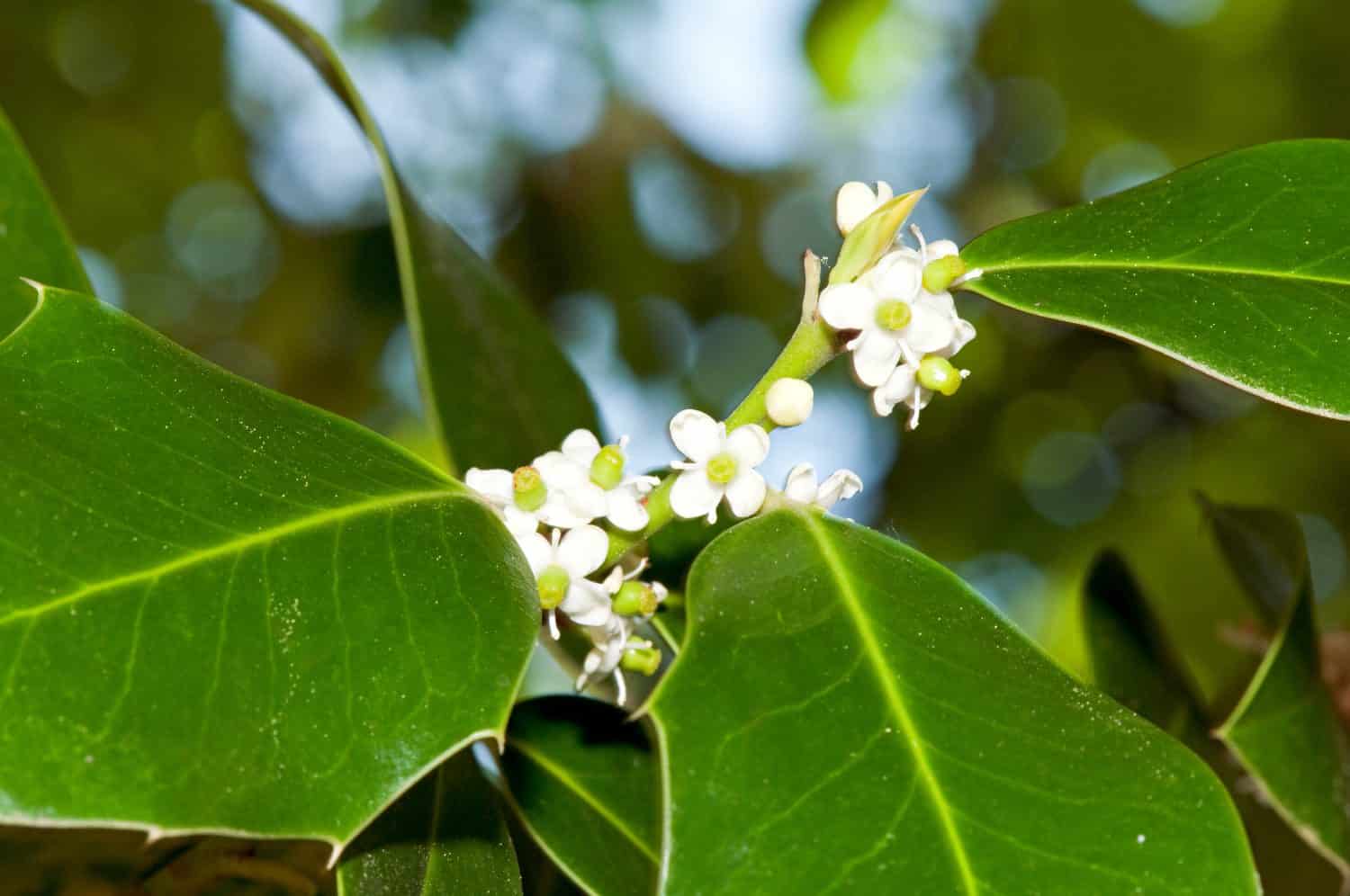
Holly produces lovely white blossoms before the iconic red berries take over.
©Bos11/Shutterstock.com
You may know Winterberry by another name: Holly! The bold red berries are associated with luck and good fortune in Asia, making Winterberry trees a popular bonsai option.
Winterberry will grow outdoors in USDA zones 3-9. The berries are considered toxic to pets and people, so be mindful when giving them as a gift.
Flowers That Mean Good Luck: A Summary
| Flowers That Mean Good Luck | Botanical Name |
|---|---|
| Azalea | Rhododendron spp. |
| Bells of Ireland | Moluccella laevis |
| Cherry Blossoms | Prunus serrulata |
| Chrysanthemum | Chrysanthemum spp. |
| Cornflower | Centaurea cyanus |
| Gardenia | Gardenia jasminoides |
| Hydrangea | Hydrangea macrophylla |
| Jasmine | Jasminum spp. |
| Lotus | Nelumbo nucifera |
| Magnolias | Magnolia spp. |
| Marigold | Tagetes spp. |
| Myrtle | Myrtus spp. |
| Orchid | Orchidaceae spp. |
| Peonies | Paeonia spp. |
| Plum Blossoms | Prunus mume |
| Poppy | Papaver spp. |
| Runner Bean | Phaseolus coccineus |
| Shamrocks | Oxalis spp. |
| Snowdrops | Galanthus spp. |
| Winterberry | Llex verticillata |
The photo featured at the top of this post is © iStock.com/svf74
Thank you for reading! Have some feedback for us? Contact the AZ Animals editorial team.






